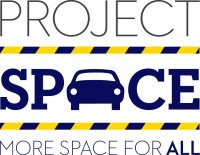


Q1. | What is ProjectSPACE? |
A1. | ProjectSPACE does four things.
ProjectSPACE is a joint project between the Parking Authority of Baltimore City and the Mayor's Commission on Disabilities. In addition to the above, ProjectSPACE also increases the duration limit for parking at the meter to at least four hours to give people with disabilities additional time to get to and from their destination. |
Q2. | Where is Project SPACE currently? |
A2. | Phase 1 (Central Business District) is bordered by: Phase 2 of ProjectSPACE (Harbor East/Fells Point) is bordered by: Phase 3 (Federal Hill) launched on April 17, 2017, and is bordered by: Phase 4 of ProjectSPACE (Mount Vernon) went into effect October 30, 2017, and is bordered by: Maps (PDFs) outlining each area and locations of reserved spaces are available via the links below. Additional areas will be added in the future so please continue to visit our website for updates. |
Q3. | Who does it impact? |
A3. | Anyone who parks in Baltimore City, particularly in the areas included in Phases 1, 2, 3, 4, and 5 of ProjectSPACE, includes employees, patrons, business owners, residents, and visitors. As of 2013, cars displaying disability hang tags or license plates are subject to posted residential permit parking restrictions. Download the press release from the Department of Transportation for more information. |
| Q4 | When did Project SPACE go into effect? |
| A4. |
|
Q5. | Why was ProjectSPACE created? |
A5. | ProjectSPACE was created to help ease Baltimore’s parking problem by increasing the availability of parking for those with a disability and decreasing disability placard thefts. People with disabilities now find it easier to locate a parking space, either at a multi-space parking meter or at one of the single-space meters reserved for people with disabilities. In many cases, they are also paying less than before ProjectSPACE because they were paying to park in a garage, where it would cost three times as much. |
Q6. | Isn’t free parking for those with disability placards or license plates mandated by law? |
A6. | No. There is no Baltimore City or Maryland state law requiring free parking for people with disabilities. The policy of allowing those with disability placards and license plates to be exempt from the required payment of parking meters was created after the 1990 passage of the Americans With Disabilities Act (ADA), which found the traditional crank-turn parking meters to be non-accessible. The multi-space EZ Park meters that were introduced in 2004 use a newer technology with no crank-turn mechanism. We lowered the credit card reader and coin drop locations in the EZ Park meters in Phases 1, 2, 3, 4, and 5 (Mt. Washington, Hampden, Station North, and Midtown) to meet the newest ADA standards. New single-space meters installed in the reserved spaces throughout Phases 1, 2, 3, 4, and 5 (Mt. Washington, Hampden, Midtown, and Station North) meet ADA standards to be more accessible for those with disabilities. |
Q7. | What was Baltimore City’s policy for vehicles parking with a disability placard and/or tag? |
A7. | Baltimore City, like many other cities, had a policy (not law) that allowed vehicles displaying a disability placard or tag to park on street for free due to traditional parking meters not meeting Americans with Disabilities Act (ADA) guidelines. This policy will no longer be in effect in Phase 1 (Central Business District), Phase 2 (Fells Point & Harbor East) and Phase 3 (Federal Hill), Phase 4 (Mount Vernon), and Phase 5 (Hampden, Mt. Washington, Station North, and Midtown) of ProjectSPACE. All parkers in these areas, including those with a disability placard and/or tag, will be required to pay for on-street parking. |
Q8. | Does ProjectSPACE affect off-street parking such as parking garages and private lots? |
A8. | Off-street parking options such as private garages and lots will not be directly affected by ProjectSPACE. However, as a result of the program, more commuters may choose to park off-street, which will create more on-street parking spaces. |
Q9. | What is the policy for parking at meters that do not meet the Americans with Disabilities Act (ADA) guidelines? |
A9. | If you are parked at a meter that does not meet ADA guidelines, and you are displaying disability plates or a disability placard, you are allowed to park for double the duration of the meter up to four hours. |
Q10. | What is the Americans with Disabilities Act (ADA) and how does it affect ProjectSPACE? |
A10. | The ADA is a law that was enacted by the U.S. Congress in 1990 to increase access for people with disabilities. The ADA provides requirements for accessible parking options for people with disabilities, and ProjectSPACE meets all of these requirements. Click here to view more information about the ADA. Visit the Office of Equity and Civil Rights' website and their ADA information webpage. |
Q11. | Where can I find information about obtaining a handicap placard and/or tag? |
A11. | People with disabilities can contact the Motor Vehicle Administration. |